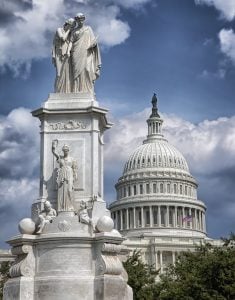After months of sitting in the Senate, the SECURE Act, which we warned back in June could end “stretch IRAs” and potentially end profit-sharing plans based on new part-time participation requirements, is on its way to becoming law. This landmark retirement reform bill is now tacked onto a “must-pass” $1.4 trillion spending package for FY 2020 that will be voted on this week -- likely in the House today and then later this week in the Senate. It’s expected to meet President Trump’s signature without much contention before the December 20th deadline that will avoid another government shutdown.
The Setting Every Community Up for Retirement Enhancement Act (SECURE Act) passed the House by a 417-3 vote earlier this summer. It stalled in the Senate for months, and, honestly, it’s a bit surprising to see Congress change tax laws so significantly at year-end. The passage of the SECURE Act will impact 2019, 2020, and years beyond.
So, what’s the big deal anyway?
The most impactful and most talked-about provision of the SECURE Act is the removal of “stretch” distribution provisions from inherited retirement accounts. This is a big deal for trusts previously written as “pass-through” or “see-through” trusts, which may now have to be rewritten with the SECURE Act in mind. If they’re not, existing trust language could restrict access heirs’ access to funds and cause massive tax bills.
The loss of “stretch” IRAs means that, instead of being able to stretch distributions out over the life of the beneficiary, heirs will have to take all RMDs out of a retirement account no later than 10 years after the account owner dies. For many people, this places that income right in the middle of their working and highest tax years.
Huge tax burden = really big deal.
But, please don’t think the removal of “stretch” IRAs and RMDs is where the impact of the SECURE Act ends.
In addition to the removal of “stretch” IRAs and RMDs, here are 7 more provisions we think will impact individuals and small businesses the most:
- Increased Access to Retirement Plans for Small Business Employees
The bill expands the ability for small businesses to run multiple employer plans and allows small employers to join forces and set up and offer 401(k) plans with fewer liability concerns and less cost. Small employers typically have not offered retirement savings options, so the hope here is that we’ll see more employees of small companies be able to take advantage of employer-sponsored plans. - Inclusion of Annuities in 401(k) plans.
The bill seeks to update the safe harbor provision for plan sponsors to select annuity providers in an attempt to increase access to retirement savings options for individuals. - Increased Required Minimum Distribution Ages
Current law requires that most individuals take RMDs from their retirement accounts once they reach age 70 ½. The SECURE Act would delay this until age 72. - Removal of Age Limitation on IRA Contributions
Current law discourages contributions to IRAs (except ROTH IRAs) after age 70 ½. The SECURE Act removes that age limitation, allowing contributions to traditional IRA accounts at any age. This is particularly beneficial for Americans who continue to work longer in life. - A Tax Credit for Automatic Enrollment Into a Retirement Plan
To help small employers encourage auto-enrollment into their retirement plans, the SECURE Act offers a new tax credit of $500. - Penalty-free Withdrawals for Birth or Adoption
The bill allows an aggregate amount of $5,000 to be distributed from a retirement plan without the traditional 10% penalty provided the funds are used for a qualified birth or adoption within a year of the child’s birth or adoption. - Lifetime Income Disclosure for Defined Contribution Plans
The bill requires that defined contributions deliver a lifetime income disclosure to participants at least once every 12 months to show how much income the lump sum balance in the retirement account could generate.
The passage of the SECURE Act (and we assume it will pass) represents the largest, most sweeping retirement legislation to move through Congress in more than a decade. Its potential for creating tax burdens due to faster distributions from inherited retirement accounts is but the tip of the iceberg. Estate and retirement planning has effectively changed, and its new complexity will require a new level of planning.
Is your team of advisors prepared to help you meet the challenge?



